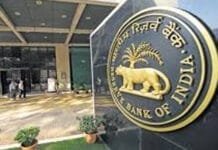The non-banking financial companies (NBFCs) sector in India has witnessed remarkable growth in recent years, particularly since the introduction of the RBI’s Scale Based Regulations Framework (SBR). This framework has enhanced stability, streamlined operations, and fueled a surge in lending activity within the sector. The regulatory reforms have also led to a significant reduction in non-performing assets (NPAs), further boosting the sector’s resilience.
Among the companies navigating this evolving landscape is Tata Sons, which is now facing regulatory pressure to bring an Initial Public Offering (IPO) due to the mandates set by the Reserve Bank of India (RBI). This article delves into the acceleration of NBFC loans, the impact of SBR, and Tata Sons’ impending IPO, highlighting how the company is positioning itself in response to the changing regulatory environment.
NBFCs’ Lending Surge Under SBR
Since the RBI introduced the Scale Based Regulations (SBR) framework in October 2022, NBFCs have reported a significant uptick in lending activity. According to the latest reports, the sector has experienced more than a 10% increase in lending, a clear reflection of the sector’s robust performance.
This increase in lending can be attributed to a combination of factors:
- Improved regulatory oversight: The SBR framework has introduced a tiered approach to regulation, based on the size and complexity of the NBFCs, which has enabled more efficient risk management and governance.
- Lower NPAs: The ratio of bad loans (NPAs) has substantially decreased since the framework’s introduction. As of December 2021, NPA levels in the NBFC sector ranged between 4.4% and 10.6%. By December 2023, this figure had dropped to between 2.4% and 6.3%.
- Streamlined operations: The SBR framework has compelled NBFCs to strengthen their internal processes, focus on digital transformation, and adopt better risk management strategies, which have collectively contributed to this growth in lending.
NBFCs have also benefited from the growing demand for credit in India, driven by a burgeoning middle class, rapid urbanization, and increasing economic activity across various sectors. As traditional banks face limitations in reaching certain segments of the population, NBFCs have stepped in to bridge the gap, providing crucial financial services to underserved markets.
Declining NPA Ratios Signal a Healthier Sector
One of the most notable achievements of the SBR framework has been the sharp decline in non-performing asset ratios within the NBFC sector. High NPA ratios had long plagued NBFCs, leading to concerns over their long-term viability and financial stability. However, since the SBR’s implementation, there has been a marked improvement in asset quality.
The report highlights that the NPA levels in the sector have dropped from a range of 4.4% to 10.6% in December 2021 to a much lower range of 2.4% to 6.3% by December 2023. This improvement is a testament to the effectiveness of the regulatory measures, which have compelled NBFCs to adopt more stringent risk management practices, conduct better due diligence, and focus on portfolio diversification.
As a result, the sector is now better equipped to handle future economic shocks, making it a more attractive option for both borrowers and investors alike. This positive trend is expected to continue as NBFCs further refine their operational models and embrace technological innovations.
Tata Sons and the Push for an IPO
While most NBFCs in the upper layer of the SBR framework have already taken steps to list their shares, Tata Sons has been notably reluctant to pursue an Initial Public Offering (IPO). The company’s hesitation stems from a variety of factors, including its desire to retain greater control over its operations and concerns about the potential volatility of public markets.
However, under the current RBI regulations, Tata Sons is required to list by September of next year. Failure to do so could result in regulatory penalties or other consequences, forcing the company to reconsider its strategy.
Why Tata Sons Has Been Reluctant to List
Tata Sons’ reluctance to bring an IPO can be attributed to several reasons:
- Debt repayment strategy: Tata Sons has explored alternative strategies to comply with regulatory requirements, such as repaying loans and adjusting its capital structure. By reducing its debt burden, the company hopes to avoid the necessity of going public while still adhering to the RBI’s upper-layer NBFC guidelines.
- Desire for privacy: As a conglomerate with interests in a wide array of industries, Tata Sons has traditionally preferred to maintain its status as a privately held entity. Going public would expose the company to greater scrutiny and require it to disclose sensitive financial information, which could impact its competitive positioning.
- Market volatility: The company may also be wary of the inherent volatility in stock markets, particularly in light of the global economic uncertainty triggered by factors such as geopolitical tensions and fluctuating commodity prices. An IPO could expose Tata Sons to fluctuations in investor sentiment, which may not align with its long-term strategic goals.
The Inevitable IPO: Strategic Implications for Tata Sons
Despite its reservations, Tata Sons is facing mounting pressure to bring an IPO in compliance with RBI regulations. Listing could unlock several potential benefits for the company, including:
- Increased capital access: An IPO would provide Tata Sons with access to public capital markets, enabling it to raise funds for future expansion, debt reduction, or acquisitions. This could be particularly advantageous as the company looks to strengthen its foothold in key sectors such as technology, infrastructure, and financial services.
- Enhanced corporate governance: As a publicly listed company, Tata Sons would be subject to stricter governance standards, which could help to further improve transparency, accountability, and investor confidence.
- Broader investor base: An IPO would allow Tata Sons to diversify its investor base, attracting both domestic and international institutional investors. This could provide the company with greater financial stability and long-term growth prospects.
The Role of Other Upper-Layer NBFCs
Tata Sons is not alone in navigating the complexities of the SBR framework. The RBI has designated 15 NBFCs as part of the upper layer, including major players such as:
- LIC Housing Finance
- Bajaj Finance
- Shriram Finance
- L&T Finance
- Indiabulls Housing Finance
- Piramal Capital & Housing Finance
- Mahindra & Mahindra Financial Services
- PNB Housing Finance
- Aditya Birla Finance
- HDB Financial Services
- Bajaj Housing Finance
- Tata Capital Financial Services
Most of these companies have already begun taking steps to comply with the RBI’s listing requirements, either by pursuing IPOs or by exploring other financial strategies to align with regulatory expectations.
The Road Ahead for NBFCs and Tata Sons
As NBFCs continue to expand their lending operations under the RBI’s SBR framework, the sector is poised for sustained growth. The reduction in NPAs, coupled with increased demand for credit, positions NBFCs as a critical component of India’s financial ecosystem. However, companies like Tata Sons must adapt to the regulatory pressures and changing market dynamics by bringing an IPO or exploring other compliant financial strategies.















